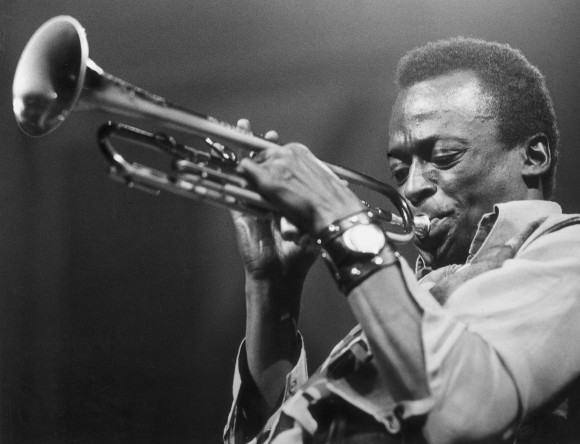
Miles Dewey Davis III was a famous American jazz musician. He was born on May 26, 1926 to a wealthy African American family in Alton, Illinois. His father was a dentist who also owned a ranch in Arkansas. Davis developed an appreciation for music at an early age after listening to gospel music at his local church. His mother wanted him to learn to play the piano as she herself was a talented musician. His father enrolled him for trumpet lessons with a local musician named Elwood Buchanan who taught Davis to play the trumpet without vibrato, which was against the musical norms of the time. He was influenced by the music of the American trumpeter Clark Terry.
Davis began gaining a reputation as a talented musician from a very young age. He was a member of the music society at school and also began to play at clubs such as the local Elks Club. He briefly joined a band named the “Blue Devils” and also performed alongside acclaimed jazz musicians Billy Eckstine, Dizzy Gillespie and Charlie Parker. He graduated from high school in 1944 after which he moved to New York to study at the Julliard School of Music. Once there, he reestablished contact with Charlie Parker, and became one of his posse, which also included other famous musicians such as Fats Navarro, Freddie Webster, J. J. Johnson, Thelonious Monk and Kenny Clarke.
Davis then dropped out of Julliard because he felt he was not being fulfilled musically. He did acknowledge its role in improving his trumpeting skills and providing a valuable education in musical theory. After leaving Julliard, he began playing small time gigs professionally such as with Coleman Hawkins and Eddie Davis. In 1945, he became a member of Herbie Fields’s group and began recording with them. He then became a trumpeter in Gillespie’s quintet and began touring with them. He also began composing with the Canadian composer Gil Evans which gave birth to a distinctive sound known as “Birth of the Cool”. He became heavily involved with drugs and became a heroin addict. His new group included drummer Philly Joe Jones, bassist Paul Chambers, pianist Red Garland and tenor saxophonist John Coltrane, which became known as the Miles Davis Quintet.
He churned out some of his greatest hits during this time, such as “Miles Ahead” in 1957, “Porgy and Bess” in 1958, “Sketches of Spain” and “Kind of Blue” in 1959 and “Quiet Nights” in 1962. Between 1963 to 1968, he worked with a new band, after which period he began to work on a different kind of music, which included a fusion of jazz and rock. In 1970, he released an LP titled “Bitches Brew” which was very successful commercially, selling more than 400,000 records and achieving Gold status. Another fusion album released around the same time was “In a Silent Way” which also had an experimental sound and was popular with both fans and critics.
Davis was a popular performer and continued to release a string of albums such as “Big Fun”, “Get Up With It”, “Dark Magus”, “Agharta” and “Pangaea”. He worked to overcome his cocaine addiction and his album “Tutu” released in 1986 won a Grammy Award in 1987. His health was deteriorating by this time, and there were rumors that he had AIDS. Miles Davis died in 1991 at the age of 65. He is widely regarded as one of the most influential jazz musicians of the 20th century, and his work achieved immense recognition and fame both during his lifetime and after his death.
